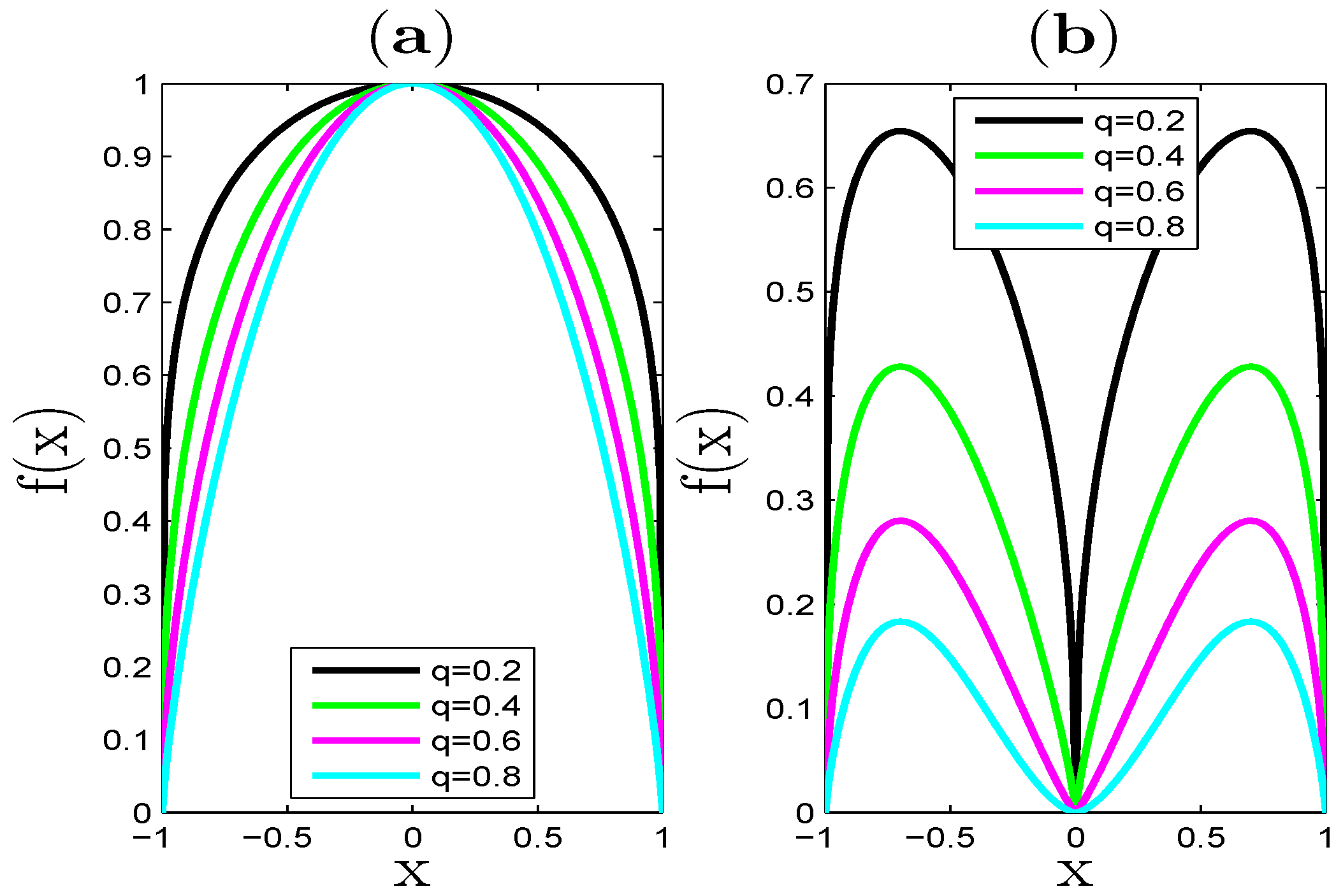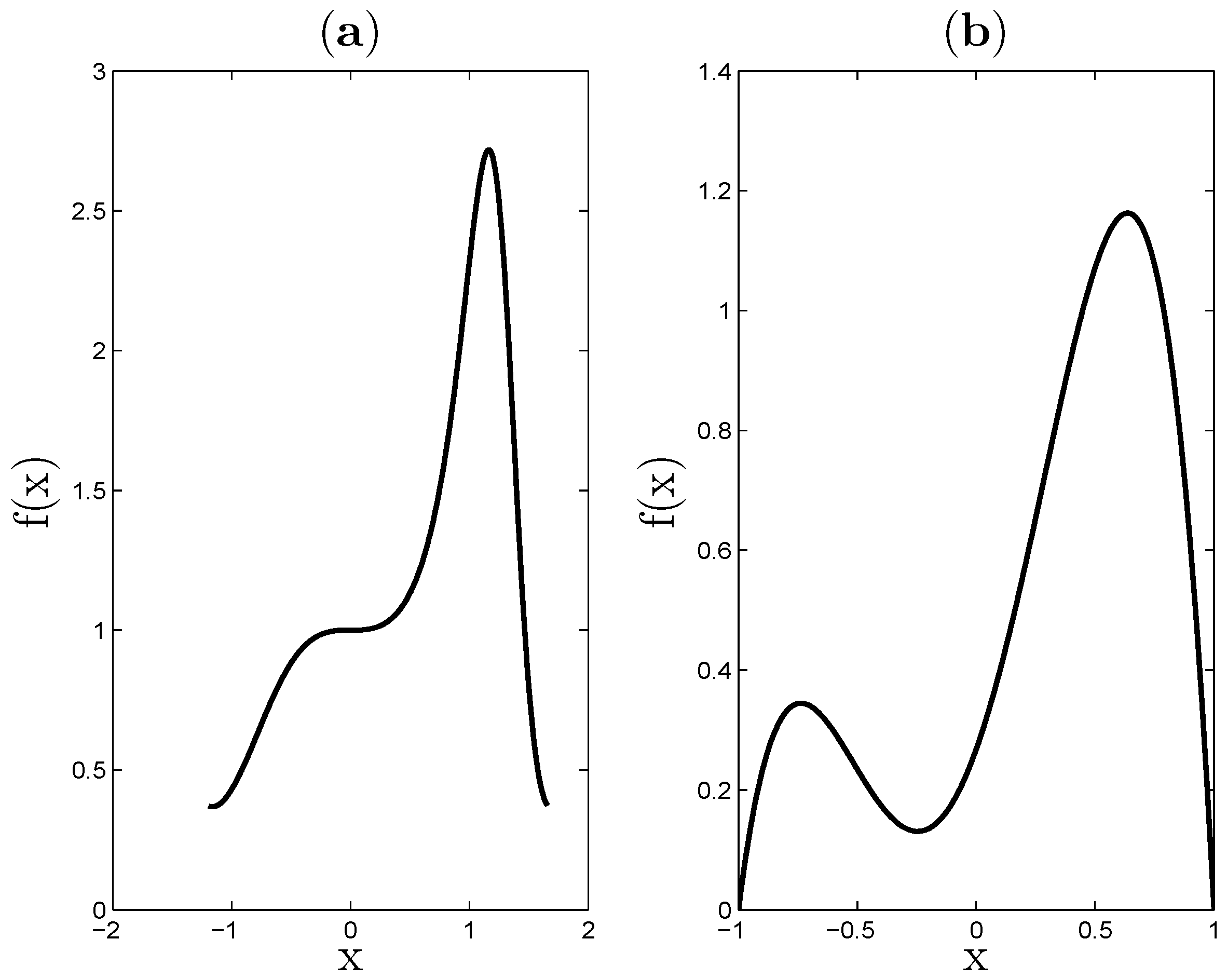1. Introduction
Systematic sampling, often used in the area of biomedical imaging, is a design-based approach for estimating a parameter
Q of the geometrical quantities, such as volume, area, surface area and length. In the systematic sampling principle, geometrical objects are sampled with probes, such as lines, a regular grid or designed patterns. The probes superimposed on the geometrical objects are tools for us to get the quantitative values of geometrical objects. If we have an equidistant systematic sampling on geometrical objects, we will have the estimated values for each replication of the sampling of these objects. The estimated values obtained from each replication of this sampling on geometrical objects produce a fluctuation [
1,
2,
3,
4,
5]. Therefore, this fluctuation is modeled by Fourier transformation
, which was considered by [
6,
7]. Since we have the estimated values for parameter
Q, the variance estimation is needed. For the systematic sampling on
, also called Cavalieri sampling, previous studies shed some light on the variance estimation for the systematic sampling on a real line [
8,
9,
10,
11,
12,
13,
14,
15]. The main source in these studies is the inspiration of Matheron’s theory. Matheron proposed his covariogram model
intuitively. In this study, we aim to focus on testing the performance of this covariogram model for the different measurement functions in the regular and irregular forms. It is important to test the capability of fitting the performance of his covariogram model, because the sampling directions (axises), which are axial, coronal or sagittal, produce the different measurement functions, as implied by [
2]. There is no study addressing the performance evaluation of the covariogram model for the different measurement functions. In this context, the works in Ref. [
1,
2,
3,
4,
5,
6,
7,
8,
9,
10,
11,
13,
14,
16,
17,
18,
19,
20,
21,
22,
23,
24,
25,
26,
27,
28,
29,
30,
31] used Matheron’s covariogram model for the different measurement functions.
After having the estimated value for the parameter
Q, said as
, we should focus on the confidence interval for
. The work in Ref. [
2] proposes two approaches for the coefficient of the confidence interval. The first one is based on statistical theory. In this study, the second proposition of [
2] is examined. The main motivation is to find a calculation method for the constant
, which is used to construct the confidence interval for
. In this sense, we will give the exact calculation method for
, so we have more accurate information for the confidence interval. We also test the exact values of
for the different measurement functions.
The paper is organized as follows.
Section 2 introduces the materials in the systematic sampling on
and describes the exact calculation method for constant
, as well. A simulation study and real data examples are given in
Section 3.
Section 4 considers the discussions of the results.
4. Conclusions and Discussions
The works in Ref. [
6,
7,
8,
9,
10,
11,
12,
13,
14,
15,
19,
20,
21,
22] focused on the variance estimation for systematic sampling. As implied by [
9,
17,
21], the estimation of
q is important to avoid the biasedness of the variance estimator in systematic sampling on
. The unbiasedness of the variance extension term estimator leads to having accurate lower and upper bounds of the confidence interval for the systematic sampling on
. In fact, the true variance in Equation (
5) is the combination of three components, so we always have biased variance estimation; however, for practical purposes, we are only interested in the variance extension term. It is observed from the simulation results that
and
have values that contain the same number of zero digits in the fraction part for the measurement functions in Equations (
8), (
9) and (
11) at most times under Equations (
12) and (
20). However, the same performance of the formula in Equation (
20) is not observed for the variance approximation of the systematic sampling of
in Equation (
10) even if the number of sample sizes increases. Therefore, the formulae in Equation (
12) and Equation (
20) are not appropriate to use. It should be noted that due to the definition of systematic sampling given in Equation (
1), a fluctuation can be observed, so evaluating the performance of
and
according to the behavior of the sample size cannot be sensible. However, when the sample size increases, it is logical to expect the information coming from
to be increased. In this context,
Table A1,
Table A2,
Table A3,
Table A4,
Table A5,
Table A6,
Table A7,
Table A8,
Table A9,
Table A10,
Table A11 and
Table A12 show that when the sample size increases, the values of
and
are decreased. As implied by p. 319 in [
8], if a measurement function has irregularities, such as Equations (
9)–(
11), the values of
are high when the sample size is small, because the information is not enough to catch the approximate shape of the three-dimensional object. For the measurement functions in Equations (
9)–(
11),
Table A6,
Table A8,
Table A10 and
Table A12 support this implication on p. 319 of [
8]. The
values of
in Equation (
9) with
can approve the fluctuation when the sample sizes are 5–20. For other measurement functions, the fluctuation on
is not observed; in fact, there is a fluctuation; however, the effect of sample size covers the fluctuation. Otherwise, proposing a Fourier transformation to model the estimated values of parameter
Q would not give the results for
that are approximate to
.
A three-dimensional object is represented by a flexible balloon filled with gas. The shape of this balloon can be modified by means of hands. The volume of the balloon can change after each modification; however, it is not important whether or not there is a change of the volume of the balloon. The modified versions of the balloon are represented by the measurement functions given in Equations (
8)–(
11). The measurement functions in Equations (
10) and (
11) do not have the parameter
q; however, they can be a neighborhood of
having parameter
q. Since we have different forms of the balloon, we will have many forms of the measurement functions representing the three-dimensional object exactly. In the real data case, knowing the exact form of the three-dimensional object is impossible. The covariogram functions coming from the
without
q will be the neighborhood of the covariogram functions coming from
with
q. This is why the covariogram model has the parameter
q. The true
with
q cannot be known exactly due to fact that we can have
without
q, which is a neighborhood of
with
q. In other words, we can have approximately the same functions, which are different mathematical expressions.
A method showing how to calculate constant
is proposed. It is expected that this method can be used as a new tool in mathematics when it is needed. A package program written in MATLAB
gives the lower and upper levels of confidence and the quantitative values of stereology when the data obtained from a single replication is typed. The program can be supplied on request. The estimation of
q is an open problem, even if we know the exact form of the measurement functions, except Equation (
8) with
. In the other perspective of our discussion, the covariogram model cannot be a very good approximation for the covariogram functions of measurement functions. However, the values of
and
contain the same numbers of zero digits in the fraction part at most times for the measurement functions in Equations (
8), (
9) and (
11) under Equations (
12) and (
20).
The values of
and
are the other criteria to approve the performance of the exact values of the constant
, as observed from the simulation results. A numerical computation for the constant
of the confidence interval was done by [
2]. The more precise the values of the constant
means the more precise the confidence interval. It is obvious that the proposition of exact calculation has to be preferred, because the computation of the constant
proposed by [
2] is not as good as the results displayed by
Table 1 and
Table 2, as seen by the conformity between
and
for exact values of
, especially for the measurement functions in Equations (
8), (
9) and (
11).
It is observed that the synthetic data can approve the real data for non-vivo brains if the real data have an exactly similar form as the synthetic data. Since the real data cannot be represented by the exactly similar measurement functions, we should prefer to use different
N values. For this reason, we chose the different
k values for the estimation of
q in real data. Equation (
25) can produce the negative estimated
value for the area function of the real data given in
Figure 3. The constant
values for different
N values must be given, because the real data shows that we need constant
values with different
N. In this context, the edges of digital images have to be found more precisely. Especially, when the edges of images are more irregular, the precision of getting area values for each image has to be decreased significantly. To do this, new edge detection methods proposed by [
38] can be used.
The proposed measurement functions should be systematically sampled while conducting research on biomedical imaging to increase the information in the decision rule for now. To be able to increase the performance of the variance approximation, the fractional Fourier transformation may be applied to get a new variance estimation of the equidistant systematically sampled on
. Other types of
may also be used. In this case, we need the computational integral techniques. The studies done by [
39,
40] will be enlightening for the computational integration of other
types that we will use. For the construction of
via digital images, which have coronal, axial or sagittal directions, the new edge detection methods proposed by [
38] may be applied to get more precise area values of slices. We will prepare a free statistical software
R package with a macro for Mathematica for all methodologies given here and in the future.









